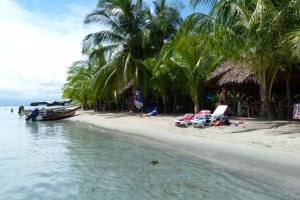New report from ICEERS Foundation and TNI, Ayahuasca: From the Amazon to the Global Village
An Analysis of the Challenges Associated with the Globalisation of Ayahuasca
By Constanza Sanchez, Barcelona
Globalisation has facilitated cultural exchange between indigenous traditions and Western practices, which has led to a growing interest in the ritual, religious and therapeutic use of ayahuasca.
Indigenous peoples in the Amazon have used ayahuasca for centuries as a remedy for physical and psychological health, and to ensure the life and wellbeing of their communities. In the past two decades, the use of this decoction has expanded beyond Amazon indigenous spheres. Globalisation, and with it the contact between populations, has facilitated cultural exchange between indigenous traditions and Western practices, which has led to a growing interest in the ritual, religious and therapeutic use of ayahuasca.
People who participate in the sessions have a positive perception of its use; while most scientific research over the past decade supports the subsequent benefits attributed to it. But the increased use of ayahuasca has not been free from challenges, such as its excessive commercialisation in the Amazon, linked to ayahuasca tourism, or the exploitation of natural resources used for its preparation. Despite not being a controlled substance at the international level, and not banned in almost any national jurisdiction, in recent years there have been an extraordinary number of detentions and judicial prosecutions in Europe, the United States and Latin America for ayahuasca importation and use. This contradiction has produced a number of uncertainties regarding its legal and political status, which varies between countries.
This report, written by Constanza Sanchez and Jose Carlos Bouso, and jointly published by the ICEERS Foundation and the Transnational Institute, focuses on the political, legal and cultural challenges related to the globalisation of the use of ayahuasca, and frames issues related to psychoactive plant substances in the broader context of existing drug policies and the current drug policy reform debate.
Key Points
•The criminal prosecution of ayahuasca users is illegitimate, futile and must end.
•The trend to treat ayahuasca as a controlled substance is misguided and requires review. It cannot be considered as such simply because it contains a substance that is subject to control.
•Equating a complex cultural practice, such as the ritual use of ayahuasca, to a single element of the whole (the DMT contained in the drink) is extremely reductionist and misinformed.
•The promotion of scientific knowledge about ayahuasca in particular, and about psychoactive plants of traditional use in general, far from contradicting the spirit of the UN drug conventions, could even help safeguard the well-being and health of humankind.
Erratum (23 December 2015):
** In page 17, we claim: “In Canada in 2006, Santo Daime received government permission to use ayahuasca in its rituals, through being granted an exemption by the Ministry of Health in accordance with Section 56 of the Drugs and Controlled Substance Act”. However, right after this report was published, we were informed that, in fact, the applicants (Ceu do Montreal) had received notice that their application was approved ‘in principle’, but this was just a bureaucratic letter and not the final exemption approval from the Ministry of Health. In 2012 Ceu do Montreal’s exemption for ceremonial ayahuasca use was denied. This means there is no legal protection for any form of ayahuasca drinking in Canada today, although the new Canadian government is much more progressive on drug policy issues and this may involve changes on this area. The authors would like to thank Kenneth Tupper for this important update. We are working to fix this mistake in the final print version of the report.


